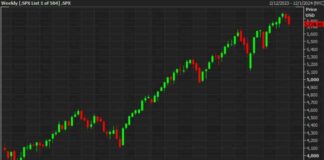Weekly Interest Rate Outlook: Forexlive Update
High Risk Warning: Understanding the Risks of Foreign Exchange Trading
Foreign exchange trading is a dynamic and potentially lucrative market, but it also carries a high level of risk that may not be suitable for all investors. One of the key factors that contribute to the high risk in forex trading is leverage, which allows traders to control large positions with a relatively small amount of capital. While leverage can amplify profits, it also increases the potential for significant losses.
Before you decide to engage in foreign exchange trading, it is essential to carefully consider your investment objectives, experience level, and risk tolerance. It is crucial to understand that you could lose some or all of your initial investment, so it is vital not to invest money that you cannot afford to lose. Educating yourself on the risks associated with forex trading is essential, and seeking advice from an independent financial or tax advisor can help you make informed decisions.
Advisory Warning: Understanding FOREXLIVE’s Role in Providing Information
It is important to note that FOREXLIVE™ is not an investment advisor. Instead, FOREXLIVE™ provides references and links to selected news, blogs, and other sources of economic and market information for informational purposes and as an educational service to its clients and prospects. It does not endorse the opinions or recommendations of the blogs or other sources of information.
Clients and prospects are advised to carefully consider the opinions and analysis offered in the blogs or other information sources in the context of their individual analysis and decision-making process. It is crucial to recognize that none of the blogs or other sources of information should be considered as constituting a track record. Past performance is not a guarantee of future results, and FOREXLIVE™ urges clients and prospects to thoroughly review all claims and representations made by advisors, bloggers, money managers, and system vendors before investing any funds or opening an account with any forex dealer.
Any news, opinions, research, data, or other information contained within the FOREXLIVE™ website is provided on an “as-is” basis as general market commentary and does not constitute investment or trading advice. It is essential to understand that FOREXLIVE™ does not purport to present the entire relevant or available public information with respect to a specific market or security. The company expressly disclaims any liability for any lost principal or profits that may arise directly or indirectly from the use of or reliance on such information, or with respect to any of the content presented within its website, nor its editorial choices.
Disclaimer: Understanding Compensation and Advertising on FOREXLIVE™
It is important to be aware that FOREXLIVE™ may be compensated by the advertisers that appear on the website, based on your interaction with the advertisements or advertisers. This compensation model is common in the forex industry, as websites often rely on sponsored content to generate revenue. While FOREXLIVE™ strives to provide unbiased and accurate information to its clients and prospects, it is essential to understand the potential influence of advertising on the content presented on the website.
Factors Affecting Weekly Interest Rate Outlook
When analyzing the weekly interest rate outlook in the foreign exchange market, several key factors come into play. Central banks play a crucial role in setting interest rates, and their decisions can have a significant impact on currency values. Economic data releases, geopolitical events, and market sentiment also influence interest rate expectations.
Central Bank Policies: Central banks around the world use interest rates as a tool to control inflation, stimulate economic growth, and maintain financial stability. When central banks raise interest rates, it is generally seen as a sign of a strong economy and can lead to currency appreciation. Conversely, cutting interest rates can weaken a currency as it reduces the return on investments denominated in that currency.
Economic Data Releases: Economic indicators such as GDP growth, inflation rates, employment figures, and consumer confidence surveys provide valuable insights into the health of an economy. Strong economic data can increase expectations of higher interest rates, while weak data may lead to rate cuts or accommodative monetary policy.
Geopolitical Events: Geopolitical events such as trade tensions, political instability, and natural disasters can create uncertainty in the financial markets and impact interest rate expectations. Traders often monitor geopolitical developments closely to assess their potential impact on currency values.
Market Sentiment: Market sentiment plays a significant role in shaping interest rate expectations. Positive sentiment can lead to increased risk appetite and higher interest rates, while negative sentiment can trigger risk aversion and lower interest rates.
Technical Analysis and Interest Rate Outlook
In addition to fundamental factors, technical analysis can also provide valuable insights into the interest rate outlook in the forex market. Technical analysts use historical price data, chart patterns, and indicators to identify trends and potential price movements. By analyzing price charts and identifying key levels of support and resistance, traders can make informed decisions about interest rate trends.
Support and Resistance Levels: Support and resistance levels are key technical indicators that help traders identify potential price reversals. Support levels act as a floor for prices, preventing them from falling further, while resistance levels serve as a ceiling, capping price gains. Monitoring these levels can provide valuable insights into potential interest rate movements.
Trend Analysis: Trend analysis involves identifying the direction of price movements over time. By analyzing trends, traders can determine whether interest rates are likely to rise, fall, or remain stable. Trends can be classified as uptrends, downtrends, or sideways trends, each of which can influence interest rate expectations.
Technical Indicators: Technical indicators such as moving averages, MACD, RSI, and Fibonacci retracement levels can help traders identify potential entry and exit points in the market. These indicators provide valuable information about price momentum, overbought or oversold conditions, and potential reversal points.
Pattern Recognition: Chart patterns such as head and shoulders, double tops and bottoms, and triangles can signal potential changes in interest rate trends. By recognizing these patterns and understanding their implications, traders can make more informed decisions about their trading strategies.
Risk Management in Forex Trading
Given the high level of risk associated with forex trading, effective risk management is essential for success in the market. By implementing sound risk management strategies, traders can protect their capital and minimize potential losses. Some key risk management techniques include:
Setting Stop Loss Orders: Stop loss orders are a crucial risk management tool that allows traders to limit their potential losses on a trade. By setting a stop loss level at a predetermined price point, traders can automatically exit a losing trade before their losses escalate.
Using Proper Position Sizing: Position sizing refers to the amount of capital allocated to each trade relative to the trader’s overall account size. By properly sizing their positions, traders can limit their exposure to any single trade and ensure that no single trade has a significant impact on their account balance.
Diversifying Your Portfolio: Diversification involves spreading risk across different asset classes, currencies, and trading strategies. By diversifying their portfolio, traders can reduce the impact of any single event or market movement on their overall trading performance.
Maintaining Discipline: Discipline is essential in forex trading, as emotional decision-making can lead to impulsive trades and costly mistakes. By sticking to a trading plan, following risk management rules, and maintaining a disciplined approach, traders can improve their chances of success in the market.
Conclusion
In conclusion, understanding the risks and complexities of the foreign exchange market is essential for anyone considering trading currencies. By carefully assessing your risk tolerance, educating yourself on the factors that influence interest rates, and implementing effective risk management strategies, you can navigate the forex market with confidence. Remember that forex trading is not suitable for all investors and that it requires a high level of skill, knowledge, and discipline to succeed. Always seek advice from financial professionals and stay informed about market developments to make informed trading decisions.

















